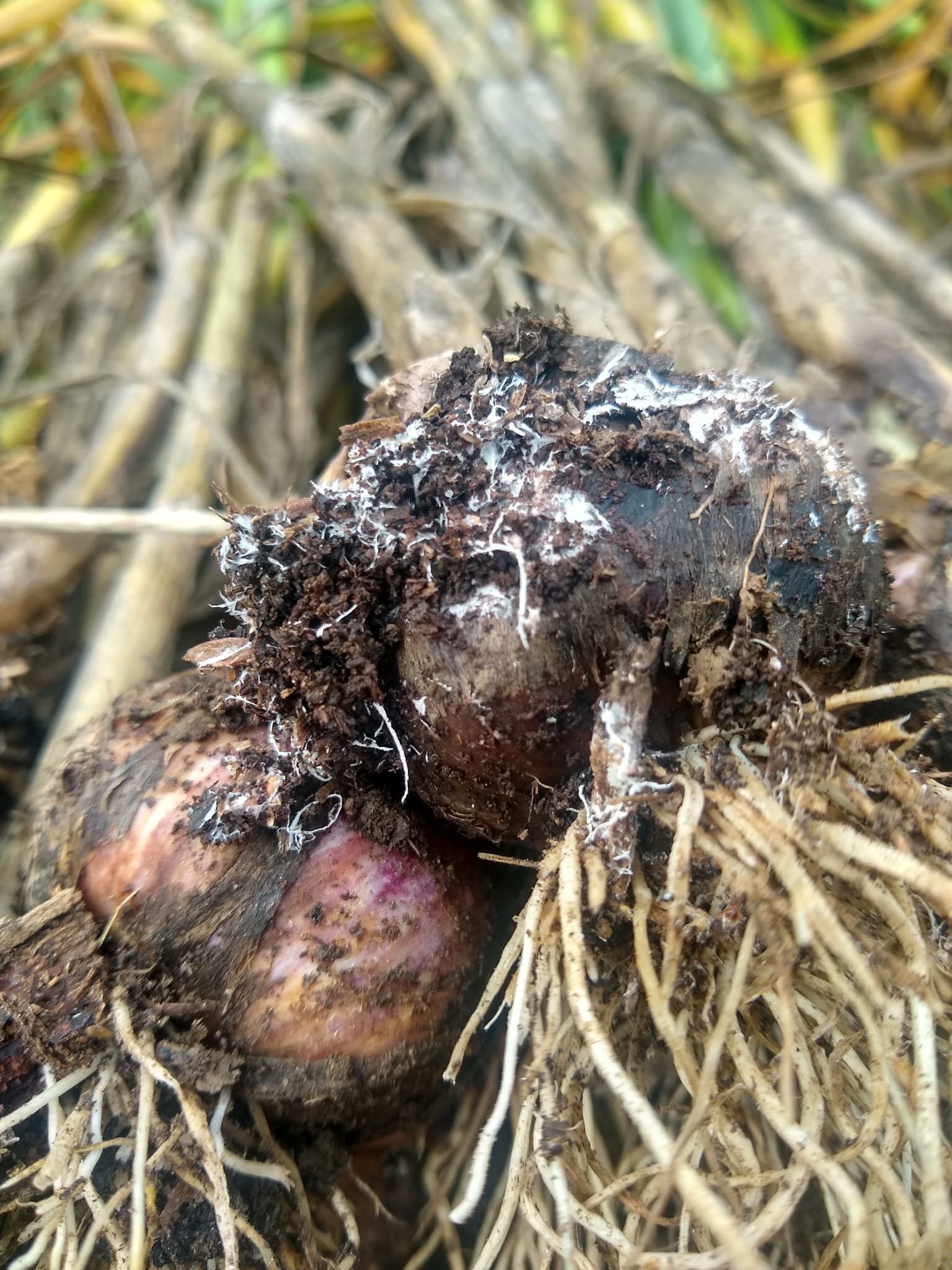Why Your Garden Needs Mycorrhizal Fungi
All plants on Earth evolved in collaboration with fungi which formed the first “roots” (see “Mycorrhizal Fungi: Nature’s Most Intimate Relationship). Six hundred million years later all the plants we grow for food have their own root systems but the vast majority of these are still dependent on intimate connections with various fungus to source nutrients and water.
It’s taken our science and our agricultural practices a while (few thousand years!) to catch up with this reality. We tend to focus on amending the soil but neglect to tend to the mycorrhizal relationships that are truly essential for plant health and have developed farming methods that actively destroy those relationships without realizing it.
If you are growing any type of plant, be it for food, medicine or beauty, an understanding of the role of mycorrhizal fungi will help you increase plant health and yields and allow you to improve your soil.
Mycorrhizal Fungi on garlic from our garden this year at The Forest Farmacy.
Below is a summary of the benefits to plants from their symbiotic relationships with mycorrhizal fungi. This is taken from the highly recommended book “Mycorrhizal Planet” by Michael Phillips.
Symbiosis Benefits to Plants
Seedlings
Prevents “damping off” disease
Reduces transplant shock
Supports root initiation on cuttings
Nutrition
Increased surface area of nutrient uptake
Unlocks phosphorus for plants
Acquires nitrogen from organic matter
Improves uptake of trace minerals
Enhances density of crops
Practical Advantages
Mediates heavy metal toxicity
Helps plants cope with soil salinity
Breaks up subsoil compaction layer
Suppresses non-mycorrhizal weeds
Cuts fertilizer requirements
Improves tolerance of higher soil temperatures
Field and Forest
Stabilized soil aggregates
Sequesters carbon
Improves plant growth and yield
Delivers moisture as needed
Augments deeper root penetration
Supressess root pathogens
Mycorrhizal Networking
Ensures balanced nutrient uptake
Ensures healthy forest succession
Facilitates plant-to-plant communication
Provides the foundation for ecosystem resiliency
Healthy Plant Metabolism
Improves rate of photosynthesis
Plays cofactor role in protein synthesis
Provides reserve energy in lipid form
Stimulates induced systemic resistance
These relationships have evolved over millions of years, they are complex and often very specific to a particular bioregion. We can’t simply introduce any mycorrhizal fungi to a garden and hope it will increase yields. In fact, this is likley to cause some problems.
Commercial mycorrhizal products are often marketed as a one-size fits all solution but typically these fungal strains are selected not for your specific garden but because they are easy to produce in a factory at a large scale and ship across the country.
You will have a lot more success introducing mycorrhizlas to your garden or farm if you start with those already present naturally in your area. Helping you learn how to do this is important to us, because we want you to be successful in your garden and because we want to facilitate these native, natural plant-fungal relationships that have been here for millions of years.
Learn more about our Mycorrhizals for Farm and Garden one-day masterclass here https://www.theforestfarmacy.com/mycorrhizal-fungi-for-farm-and-garden


